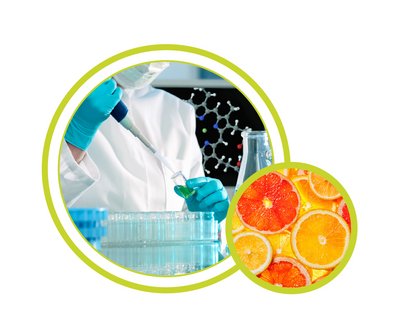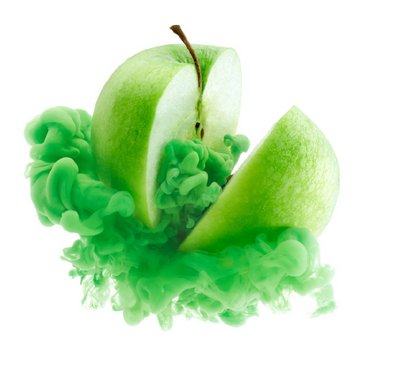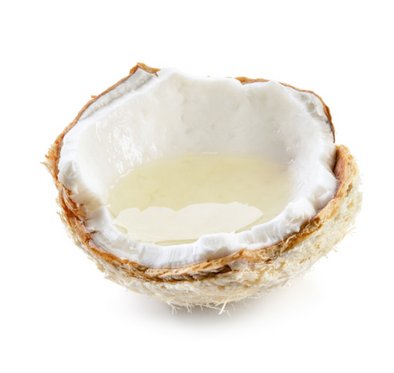Juices, Concentrates and Sweet Beverages
Microbiological quality control of raw materials and products of the beverage industry. Fast, specific and reliable - insusceptible to inhibitors, no false negative / false positive results.
Methods of microbiological quality control
Beverage spoilers such as Alicyclobacillus, fermentative yeasts and other juice spoilage agents can cause considerable economic damage. A modern quality control must ensure that these organisms can be detected quickly, specifically and reliably. Nevertheless, methods that are more than 100 years old and have serious disadvantages are still regarded and applied as the gold standard.
Culture-based detection of microorganisms on the basis of nutrient media is simple and inexpensive, but often unspecific and takes a lot of time. In addition, up to 99% of all bacteria cannot be cultivated at all.
Molecular biological methods are fast, but the presence of inhibitors in the sample material and the detection of dead cells often leads to false negative or false positive results.
Quality control with VIT® gene probe technology
With VIT®, beverage spoilers can be detected quickly, specifically and independently of their cultivability. Inhibitors in the sample material do not play any role. The bacterial cells remain intact during the analysis, which enables a clear allocation of the signals and a reliable quantification of the cells.
For more than 20 years, companies worldwide have been relying on our expertise and VIT® gene probe technology. Our customers include beverage producers, raw material suppliers, product inspection companies and quality assurance institutes that have achieved premium product quality as well as numerous financial and competitive advantages thanks to the fast and robust detection method.

Your benefits at a glance
Specific: exact identification of bacteria regardless of their morphology or cultivability
Fast: short detection time and easy handling
Sensitive: low detection limit
Only living bacteria: dead bacteria are not detected
Robust: no use of interference-sensitive enzymes
Universal: can be applied throughout the entire production chain (raw materials, in-process control and end product control)
Quality assurance at the highest level
Would you like to test fruit juices, concentrates, sweet drinks or raw materials for undesirable microorganisms? We offer a comprehensive service portfolio and a broad product range of test kits for fast and specific in-situ quality assurance of the entire production chain - from raw material to end product.

Our Services
With our services you don't have to worry about anything. Just send us your samples. The results are available within 1 to 3 working days after sample receipt.

VIT® Test Kits
Easy application and evaluation via fluorescence microscope. Fast, safe and reliable detection. All consumables are included in the test kit. Package size: 25 analyses.

Flow VIT® Test Kits
Simple application and automated evaluation via flow cytometer. All consumables are included in the test kit. Package size: 50 analyses.
Beverage spoilers - sensory faults and identification
The beverage industry is confronted with increasingly complex requirements for the production and quality assurance of fruit juices, concentrates and sweet beverages. Competitive pressure as well as the growing demands of consumers on the quality and diversity of the products require an acceleration of the production chain and thus a flexible and efficient quality assurance.
Although beverage-spoiling microorganisms are usually not pathogenic, they are particularly dreaded by juice producers. The reason: the off-flavors they cause can lead to dissatisfaction among customers and thus considerable damage to the company's image.

Alicyclobacillus
Alicyclobacilli are common thermophilic and acidophilic beverage spoilers with the ability to form endospores. They cause off-flavors such as aseptic smell and taste. The most feared representative of the genus is Alicyclobacillus acidoterrestris. Contamination usually occurs directly via fruits that have been contaminated by soil and consequently, via raw materials such as fruit juice concentrates or sugar syrup.

Acetic acid bacteria
Acetic acid bacteria appear exclusively in still beverages. As the name suggests, these bacteria cause an unpleasant acetic taste due to the formation of acetic acid, acetic acid ethyl ester and gluconic acid and a visible brownish discoloration in light beverages (e.g. orange or lemon juice). A contamination with acetic acid bacteria is usually secondary and the result of contaminations in the production chain.

Lactic acid bacteria
Juice spoilage agents such as Leuconostoc mesenteroides, Lactobacilus paracasei, L. casei and L. perolens form diacetyl in carbonated beverages, cause a cheesy odor and increase viscosity. In addition, lactic acid bacteria also produce gas, which, just as with fermentative yeasts, leads to the development of dangerous bombages. Contaminations often remain unnoticed at first. The sudden mass reproduction of the microorganisms usually does not occur until the batches have already been delivered.

Yeasts
Depending on their fermentation characteristics, they are classified as fermentative, potentially fermentative, weakly fermentative and non-fermentative (respiration yeast). The first two groups are particularly detrimental and can even cause fermentation odors and unwanted foreign tastes in carbonated beverages, as well as cloudiness and sediments in clear beverages or decreased cloud stability in naturally cloudy beverages. In addition, already bottled beverages can develop dangerous bombages that destroy the container.

Mould
Moulds grow in thin, slimy plaques on the juice surface (biofilms). In addition to sensory faults such as mouldy and musty notes they lead to a loss of cloud stability and/or to colour changes of the final product. Some moulds produce mycotoxins, which are toxic to humans in varying degrees. Contamination of the product occurs due to infected raw materials. The mycotoxin Pulin can be found e.g. in rotten spots of apples, pears, quinces, apricots, etc. It is regarded as neurotoxic and can lead to vomiting and indigestion. Grapes contaminated by moulds produce the mycotoxin Trichothecin, which has a cell-damaging effect in humans.

Pathogenic microorganisms
The occurrence of pathogens is usually limited to products from the mineral water industry. This is mainly due to the low pH values of most fruit juices and carbonated or still sweet beverages. Even if they are present in the end product in small amounts, most pathogens cannot germinate in this environment.
Get in touch with us!
You have a problem / a question and cannot find the answer on our website? We offer a lot more. Please contact us, we are looking forward to your inquiry!